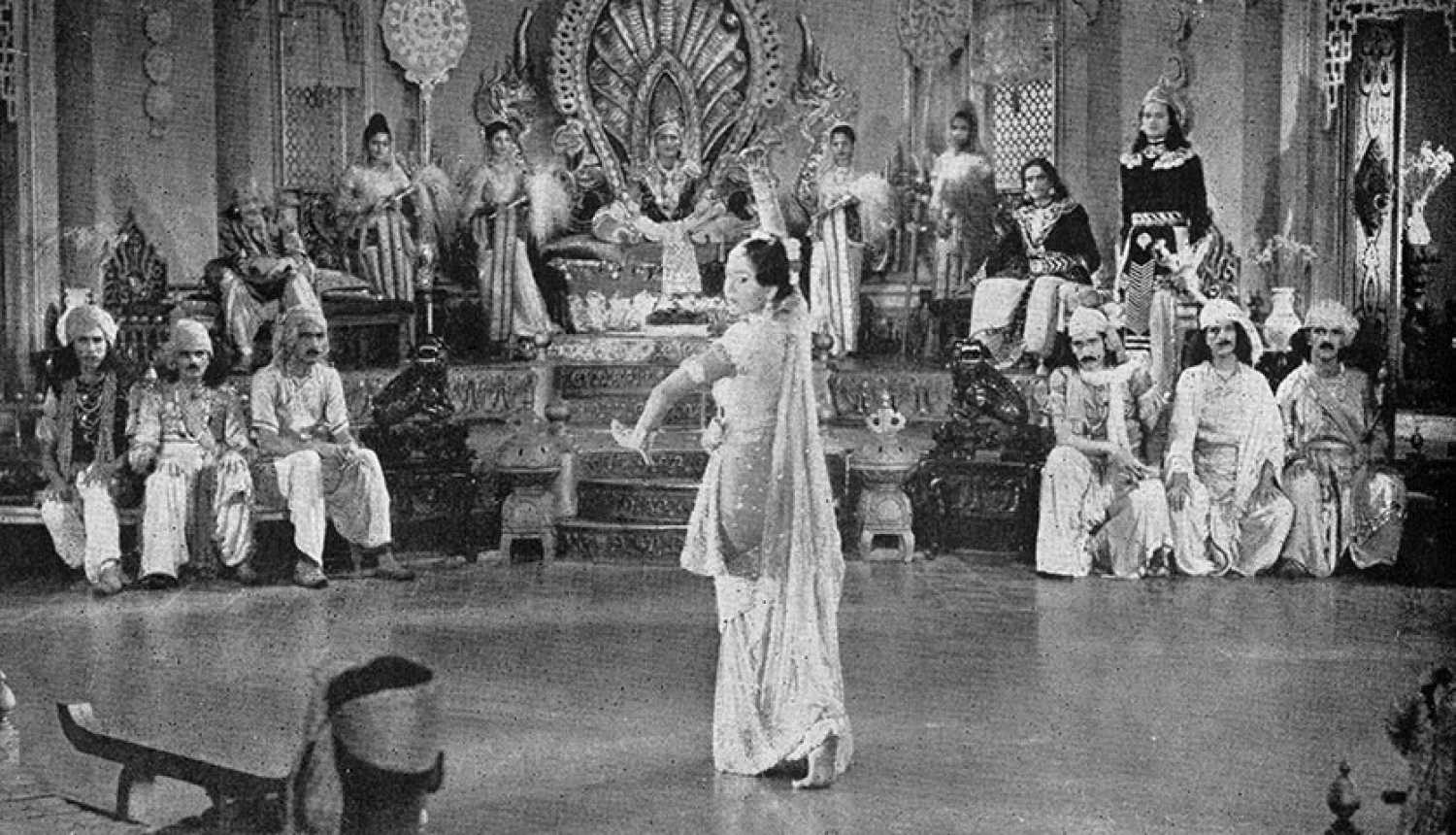Revisiting the Wadia Movietone talkie, made in India 76 years ago, which was released in USA with English dialogues three years after it made its debut in Indian theatres.


Sonal Pandya
Wadia Movietone's The Court Dancer or Raj Nartaki (1941), directed by Modhu Bose and featuring his wife Sadhona Bose, was among the earliest Indian talkies to be released in the USA with English dialogues in 1944. Its opening credits proudly proclaim: The first Indian film with dialogue in English to be entirely produced in India with an all-Indian personnel. This early dance film was a precursor to Uday Shankar's Kalpana (1948) and SS Vasan's Chandralekha (1948).

Besides Sadhona Bose, Prithviraj Kapoor, Jal Khambhata and Protima Das Gupta were among the film's cast. Sadhona Bose took on the title role of Indrani, the court dancer. Protima Das Gupta (sister-in-law of Begum Para) played her companion Riya. Kapoor (credited only as Prithviraj) was prince Chandrakirti.
Set in the kingdom of Manipur in the early 19th century, the film delved into the love story of Indrani and Chandrakirti which rose above social barriers.

Directed by Modhu Bose, with assistance on dialogues by producer JBH Wadia, the film begins on Janmashtami, right before Indrani is about to perform a dance in honour of the god Krishna and Radha. Prince Chandrakirti comes to meet her while the kingdom awaits the arrival of the high priest, Kashishwar, played by Jal Khambata, who would distribute the sacred dust from the feet of the lord.
When his father, king Jaisingh, interrupts the performance, it is revealed that Kashishwar is already amongst the audience. He is delighted by Indrani's devotion in her dance and is about to bestow the sacred dust on her when he is informed by the king about her social status, that of a lowly court dancer. Appalled, he walks away.
Thus, the chasm between Indrani and Chandrakirti is revealed. She may not accompany him to the royal temple to seek blessings and is publicly turned away. Instead, Indrani finds solace in an abandoned temple manned by a singing hermit who allows her to pray in peace.
The hermit doesn't believe any temple has the right to shut out anyone who wants to pray. Meanwhile, the king is pressuring his son, Chandrakirti, to marry the princess of Tripura.

Despite disapproval by his father, Chandrakirti is willing to give up the throne to marry Indrani. But Kashishwar intervenes and cruelly tells Indrani how she will ruin Manipur and her prince. For the sake of the kingdom and Chandrakirti’s life, Indrani misrepresents herself and makes Chandrakirti believe she will only marry him if he becomes king. Eventually, Kashishwar changes his mind about Indrani and believes her to be a noble woman. When finally Chandrakirti comes for her, Indrani has made the ultimate sacrifice, her life for the greater good.

Released in Bengali and Hindi, the film was nominated to be India's entry to the Academy Awards for 1941-42. In the Bengali version, Jyoti Prakash played prince Chandrakirti.
Wadia Movietone produced an English version to extend the reach of Indian cinema to foreign shores. In Europe and North America, The Court Dancer was distributed by Columbia Studios. Bringing Sadhona and Modhu Bose across from Bengali cinema, JBH Wadia put together a grand domestic success, as both the English and Hindi versions were hits.

Stylistically shot and composed, The Court Dancer is a highlight of Sadhona Bose's career. Sadhona, already a famed ballet and stage dancer in Calcutta, also worked on the film's costumes. As Indrani, she is presented as an almost ethereal beauty and her dances are exquisitely and gracefully performed.

Her co-star Prithviraj also had an important role in India’s first talkie, Alam Ara (1931). Once again, he was a key part of this landmark film in Indian history, as the first Indian film in English. The film's dialogues are in English while the songs are accompanied with English subtitles.
The story of The Court Dancer is reminiscent of another classic Kapoor-starrer, Mughal-e-Azam (1960), in which he played the Mughal emperor Akbar. Here, he is in the same position as Salim was in, falling for the court dancer but willing to give up everything for Indrani's love. Eventually, the film ends as a poignant sermon on religion, duty and sacrifice.



